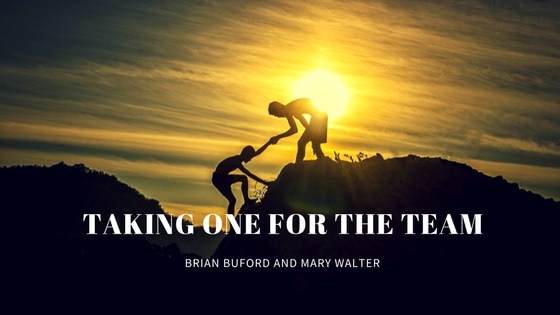|
11/20/2018
The Antidote to Burnout: Part OneBurned out, Stressed and Overwhelmed
The Antidote (part one): Gratitude Seems like an epidemic: so many leaders are feeling the pressure of rapidly changing business models, the need to drive results NOW, and the needs of team, customers and bosses. There is a fix for this: Gratitude. It is nearly impossible to feel gratitude and despair at the same moment. Consciously shifting your mindset to gratitude will give you the space to appreciate all that you have and re-engage with your work energized. Click below for the newsletter, and quick strategies that work: 8/5/2018
Survey: Feedback for the bossI'm curious...do you give feedback to your boss? Please take a minute and take this one question survey. I'd love your comments: what makes this easy or hard in your work environment? Thank you!  Do you need more time for what is most important? Do you feel that your most important priorities are neglected? Do you wish for a bit of breathing room, some reflection time? In my coaching practice, I’ve found that almost every one of the (very) successful executives I work with struggles with time management. While leadership strengths and areas for growth are otherwise quite diverse, time management is for most everyone the monster in the closet, scaring us senseless with demands, deadlines and missed opportunity. I’ve found that good time management tools can help, but until we address the underlying causes, the time saved will simply disappear. Quite often, our strengths have a dark side that often shows up in our time management. Strong calendar and meeting management, strategic review of priorities and delegation practices will work – but only if you have found the underlying beliefs that are creating the issue. Here are a few leadership strengths that may be impeding your best intentions with time management. Do any of these ring true for you? You deliver results: Once you are leading a team, having enough time requires you to give up control. If you are great at delivering results through your personal efforts, this may impede your ability to leverage your time through your team. There is simply no way that you can do everyone else’s job and your own and have enough time for sleep. Signs that this might be an issue for you:
Tactics: Accept that mistakes are critical to learning, and that allowing your team to make those mistakes is part of being a great boss. Set up structure to allow you to have input on critical decisions, without being involved in every part of the process: this might look like a weekly touch-base on projects, or a steering committee that allows everyone to weigh in on decisions. Analyze your work, and decide: what decisions require your input, what decisions can be made without you, and what decisions require team alignment. Commit to following the results of this work, and refuse to make a decision when it belongs to someone else – this will give you more time, and empower your team. Servant Leadership: Some of my favorite leaders have a strong service orientation and find tremendous meaning in helping others. While this is a wonderful strength, it can get you in trouble if:
Tactics: Balance is the key to success here. You don’t want to lose your leadership strength of service; you do need to prioritize yourself as well as your team. Consider setting “office hours” when you will be available to your team, scheduling personal work time (not to be interrupted) on your calendar, and coaching team members to bring problems to others. You’ll continue to serve your team, but in a way that develops their growth, and gives you time to do important work. You are a great coach: Do you take pride in your ability to make people successful? Do you see yourself as a great coach? Do you see your direct report’s performance as a reflection of your leadership? If so, you may have a problem dealing quickly with poor performance. It is difficult to deliver difficult performance messages, and especially difficult to separate employees who aren’t pulling their weight; this difficulty is magnified in leaders who believe it is possible to make everyone successful. Covering for poor performance (or spending an inordinate amount of time coaching) will not only impede your results, it will also suck up all your time. Tactics: Ask yourself: If I had to build my team from scratch, which team members would I keep on the team? If there is someone on your team that you wouldn’t choose again, it’s time to step up your performance management with clear expectations and a rapid timeline. You can also ask for feedback from each of your team members on how the rest of the team is performing; nobody wants to have to cover for a peer who is failing to pull their weight. (If you do this, make sure to ask for feedback on everyone to make sure you are fair and balanced.) Remind yourself that your job is to enable team success, and that success can only be realized if each member truly pulls their weight. You are willing to sacrifice for the team: Once you are leading a big team, in a big job, it is impossible to have enough time for everyone who needs or wants you. So, what’s most important for your own success? Your time management can only be strategic when you have a strategy. Does your calendar reflect your priorities and your goals, or is it high jacked with recurring meetings or activities that you don’t find valuable? Do you save your real “work” for after hours or weekends? These symptoms may be indicative of a lack of clarity on what time investment best supports your goals. Tactics: First, identify what time investment will support your goals. For instance, if you need to create organizational capacity, a good time investment is mentoring and coaching. Next, flip your approach to your calendar: instead of letting meeting requests fill open space, first schedule the work time you need, then invest time in the other activities that align with your goals. These activities may be one-on-one coaching meetings with direct reports, time with your boss, or mentoring time. Only once these priorities are scheduled should you open up to outside requests. Aligning your time investment with your goals will ensure that you are satisfied with the trade-offs you must make. Even better, you’ll see better, faster results once your time is aligned. While you may disappoint those who previously had full access to your time, the increase in your effectiveness will better serve both yourself and your team. Your leadership strengths have made you successful, and set you apart from the crowd. Keeping balance and awareness of how your style may impact your time may free you to better align your time investment, increase your peace of mind, and give you the space to breathe, or (gasp!) even waste some time on yourself! The time you enjoy wasting is not wasted time.
|
Author: Mary WalterPassionate about the impact of advancing leadership skills! Archives
November 2018
Categories |










 RSS Feed
RSS Feed
